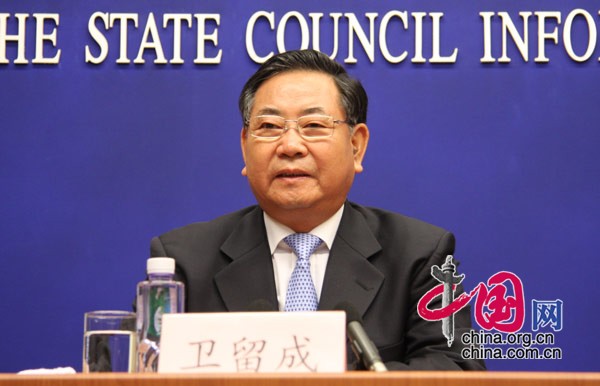Hainan looks to be tourist heaven
Hainan, the southernmost island province of China, will be built into a top international tourism destination by 2020, according to Wei Liucheng, secretary of the provincial CPC committee, during a press conference on January 6, 2010.
 |
|
Wei Liucheng, Party Secretary of Hainan Provincial Committee, attends a press conference on Hainan International Tourism Destination Strategy on January 6, 2010. |
A document released by the State Council stated that the project is expected to be finished by 2020 and Hainan will attract tourists from across the world with its top-class services, excellent eco-environment and distinctive culture.
"Different from the island resorts in southeast Asia, which are also famous for beautiful beaches, Hainan has many other cultural and scenic appeals for tourists," said Wei Liucheng. Besides beaches, the island is covered by tens of thousands mu (15 mu=1 hectare) of primitive tropical forest, providing tourists with fun of camping, hiking and rafting. The island is home to some 1.5 million people of Li and Miao ethnic groups who cherish unique customs and traditions. And there are 22 golf courses equipped with top-class facilities.
Shopping will also be a major appeal for tourists. According to the provincial governor Luo Baoming, tax-refund policies and duty-free shopping centers are likely to be introduced to the island as the authorities are busy working out specific plans and regulations.
The project to build Hainan into an international tourism island requires huge investment. Currently, the funds are raised from three sources: Financial support from the central government, revenue of provincial government and social investment. Social investment will play the most important part. Many large-scale projects, such as infrastructure facilities, theme parks and luxury hotels, are expected to be built by private investors.
According to available statistics, Hainan received 20.6 million tourists in 2008. Of them, 979,300 were from overseas. The total revenue of tourism industry was 19.23 billion yuan (US$2.81 billion). Of all foreign tourists, the largest numbers were from ROK, Russia and Japan.
 0
0 







